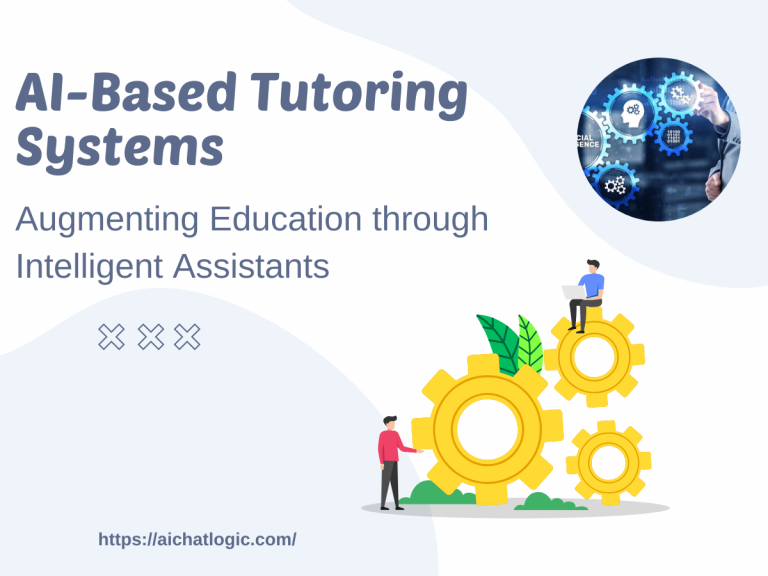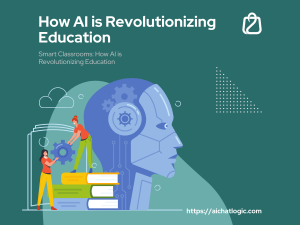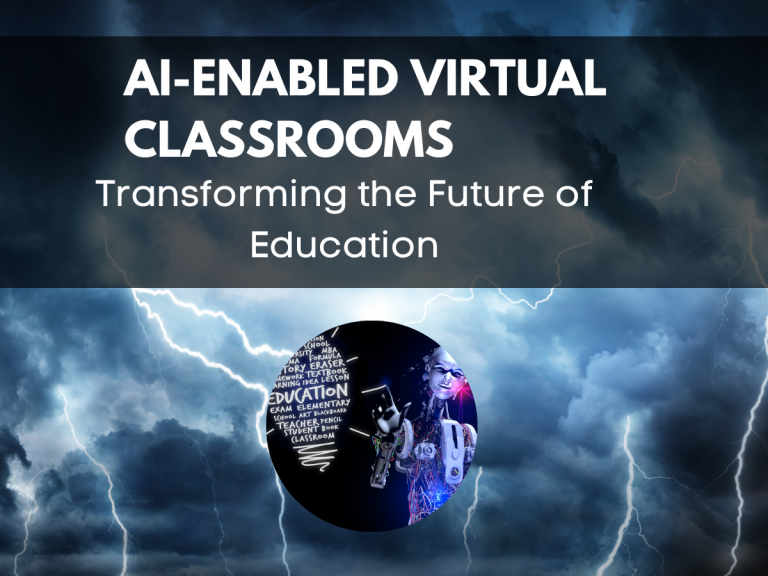1. Introduction
As technology continues to advance at a rapid pace, its impact on various industries, including education, is becoming increasingly evident. Artificial Intelligence (AI) has emerged as a powerful tool that has the potential to revolutionize the way we teach and learn. By integrating AI into education, we can enhance the learning experience, personalize instruction, and streamline administrative tasks. However, the successful implementation of AI in education requires careful planning and consideration of various factors. In this article, we will explore strategies for successfully integrating AI in education and discuss the benefits, challenges, and future possibilities of AI in the field of education.
2. The Benefits of AI in Education
2.1 Personalized Learning
One of the key advantages of integrating AI in education is the ability to provide personalized learning experiences for students. AI-powered systems can analyze vast amounts of data on students’ learning preferences, strengths, and weaknesses, and tailor instruction accordingly. Adaptive learning platforms, for example, can dynamically adjust the content and pace of learning to meet individual student needs, ensuring that each student receives personalized attention and support.
2.2 Intelligent Tutoring Systems
Integrating AI can also be crucial in the development of intelligent tutoring systems, which play a significant role in education. These systems have the capability to provide students with personalized feedback, guidance, and remediation, similar to a one-on-one tutoring experience. By analyzing students’ responses, learning patterns, and misconceptions, AI tutors can identify areas where students are struggling and seamlessly integrate targeted assistance. This integration helps students overcome challenges and improve their understanding of the subject matter.
2.3 Efficient Administrative Tasks
In addition to enhancing the learning experience, AI can streamline administrative tasks in education. Automated systems can handle routine administrative processes such as grading, scheduling, and record-keeping, freeing up valuable time for teachers to focus on instruction and student support. By automating these tasks, AI can reduce the burden on educators and improve overall efficiency in educational institutions.
3. Challenges in Implementing AI in Education
While educators can reap significant benefits from integrating AI in education, they must address various challenges to ensure successful implementation.
3.1 Privacy and Security Concerns
As AI systems collect and analyze vast amounts of student data, privacy and security concerns become paramount. Educational institutions must ensure that robust data protection measures are in place to safeguard sensitive student information. It is essential to comply with relevant data protection regulations and establish clear policies regarding data usage, storage, and access.
3.2 Ethical Considerations
Integrating AI in education raises ethical considerations that need careful attention. AI systems should be designed and used ethically, ensuring fairness, transparency, and accountability. It is crucial to address biases in algorithms, prevent misuse of AI-generated content, and ensure that decisions made by AI systems align with ethical principles and values.
3.3 Teacher Training and Support
To achieve effective implementation of AI in education, teachers require adequate training and support. They should acquire familiarity with AI technologies, grasp their potential, and possess the skills to utilize them effectively in the classroom. Implementing professional development programs can assist teachers in seamlessly integrating AI tools and resources into their teaching practices.
4. Strategies for Successful Integration of AI in Education
To ensure successful integration of AI in education, the following strategies should be considered:
4.1 Collaborative Approach
AI integration should be a collaborative effort involving educators, administrators, policymakers, and technology experts. By involving all stakeholders in the decision-making process, educational institutions can create a shared vision, set clear goals, and ensure that AI initiatives align with the needs and values of the education community.
4.2 Data Privacy and Security Measures
Protecting student data should be a top priority in AI integration. Robust data privacy and security measures must be implemented to safeguard sensitive information. Compliance with data protection regulations and regular audits of data practices can help build trust and ensure responsible use of AI technologies in education.
4.3 Ethical Frameworks and Guidelines
Educational institutions should establish ethical frameworks and guidelines for the development and use of AI in education. These frameworks should address issues such as algorithmic biases, data privacy, and accountability. By adhering to ethical principles, educational institutions can ensure that AI systems are designed and used in a manner that respects the rights and well-being of students.
4.4 Professional Development for Teachers
To maximize the potential of AI in education, teachers need adequate training and support. Professional development programs should be designed to enhance teachers’ understanding of AI technologies, their integration into the curriculum, and effective pedagogical approaches. Ongoing support and mentorship can help teachers navigate the complexities of AI integration and leverage its benefits in the classroom.
4.5 Continuous Evaluation and Improvement
Continuous evaluation and improvement are essential in the integration of AI in education. Educational institutions should monitor the effectiveness of AI initiatives, gather feedback from teachers and students, and make necessary adjustments. By evaluating the impact of AI on learning outcomes and refining implementation strategies, institutions can ensure continuous improvement and long-term success.
5. Case Studies: AI Integration in Education
5.1 Adaptive Learning Platforms
Adaptive learning platforms, such as Khan Academy and DreamBox, have successfully integrated AI to provide personalized learning experiences. These platforms use AI algorithms to assess students’ knowledge, identify knowledge gaps, and deliver targeted content and exercises to address individual learning needs. By adapting to each student’s pace and style of learning, these platforms have shown promising results in improving student engagement and academic performance.
5.2 Virtual Assistants in the Classroom
Virtual assistants, like Amazon’s Alexa or Google Assistant, have found their way into classrooms, providing support to both students and teachers. These voice-activated assistants can answer questions, provide information, and assist with various tasks, enhancing the learning experience and saving time for teachers. Virtual assistants can also be used to develop students’ critical thinking skills by encouraging them to ask thoughtful questions and seek information independently.
5.3 Automated Grading Systems
Automated grading systems, such as Turnitin or Gradescope, utilize AI algorithms to assess and grade student assignments. These systems can provide timely feedback, identify areas of improvement, and reduce the burden on teachers in grading large volumes of assignments. By automating the grading process, teachers can allocate more time to providing personalized feedback and engaging in meaningful interactions with students.
6. Future Trends and Possibilities
As AI continues to advance, the future holds exciting possibilities for its integration in education. Here are a few trends to watch out for:
6.1 AI-Powered Content Creation
AI technologies can assist in the creation of educational content. Natural Language Processing (NLP) algorithms can generate interactive and engaging learning materials, adapt them to different learning styles, and provide real-time feedback. AI-powered content creation can contribute to the development of personalized and adaptive learning resources.
6.2 Intelligent Learning Analytics
Intelligent learning analytics leverage AI algorithms to analyze vast amounts of student data and provide actionable insights for educators. These analytics can help identify learning patterns, predict student performance, and provide personalized recommendations for instructional interventions. By harnessing the power of AI in learning analytics, educators can make data-driven decisions to enhance teaching and learning outcomes.
6.3 Augmented Reality and Virtual Reality
Augmented Reality (AR) and Virtual Reality (VR) technologies offer immersive learning experiences that can significantly impact education. AI-powered AR and VR applications can create interactive simulations, virtual laboratories, and virtual field trips, providing students with hands-on experiences and enhancing their understanding of complex concepts. These technologies have the potential to revolutionize the way students engage with content and explore the world around them.
7. Conclusion
Integrating AI in education presents immense opportunities to enhance learning experiences, personalize instruction, and streamline administrative tasks. By adopting a collaborative approach, addressing privacy and ethical concerns, providing training and support for teachers, and continuously evaluating and improving AI initiatives, educational institutions can successfully harness the power of AI for educational purposes. As AI continues to evolve, the future of education holds exciting possibilities that can empower both educators and learners in unprecedented ways.
FAQs
1. How can AI personalize the learning experience?
AI can personalize the learning experience by analyzing student data and tailoring instruction to meet individual needs. Adaptive learning platforms and intelligent tutoring systems are examples of AI-powered tools that provide personalized learning experiences.
2. What are the ethical concerns related to AI in education?
Ethical concerns in AI integration in education include issues of data privacy, algorithmic biases, and accountability. It is important to address these concerns and ensure that AI systems are designed and used ethically, respecting the rights and well-being of students.
3. How can teachers be prepared for AI integration in the classroom?
Teachers can be prepared for AI integration through professional development programs that provide training and support. These programs should focus on enhancing teachers’ understanding of AI technologies and effective integration strategies into the curriculum.
4. Are there any successful examples of AI integration in education?
Yes, there are successful examples of AI integration in education. Adaptive learning platforms, virtual assistants in the classroom, and automated grading systems are a few examples where AI has been effectively implemented to enhance teaching and learning.
5. What does the future hold for AI in education?
The future of AI in education holds great promise. Trends such as AI-powered content creation, intelligent learning analytics, and augmented reality/virtual reality applications are expected to transform the learning experience and empower students and educators in new and innovative ways.










+ There are no comments
Add yours